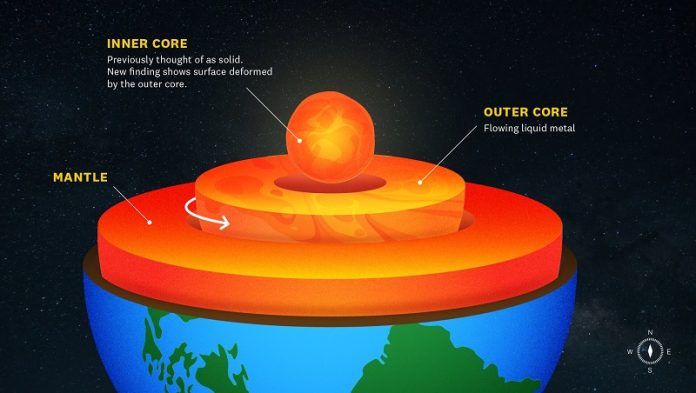
A new study by scientists at the University of Southern California (USC) suggests that Earth’s inner core might not be as solid as we once believed.
Researchers found that the surface of the inner core is changing over time, challenging previous ideas about what’s happening deep inside our planet.
Their study, published in Nature Geoscience, reveals that these changes could be linked to shifts in the core’s rotation and even tiny variations in the length of a day.
A mysterious core under our feet
The Earth’s inner core is buried about 3,000 miles below our feet and is surrounded by a molten outer core.
Scientists have long debated how the inner core moves and rotates, but this new research provides fresh evidence that its surface is also shifting and reshaping over time.
John Vidale, the lead researcher and a professor at USC, explained that the team originally set out to study how the inner core’s rotation is slowing down.
However, when analyzing decades of earthquake data, they found unusual seismic waves that hinted at something unexpected. “We didn’t expect to find this,” Vidale said. “But what we discovered suggests that the inner core is not entirely solid.”
To investigate these changes, the team analyzed seismic waves from 121 earthquakes near the South Sandwich Islands. These earthquakes occurred between 1991 and 2024 and were recorded by monitoring stations in Alaska and Canada.
One set of waves from a station in Yellowknife, Canada, looked different from anything the scientists had seen before. At first, they were puzzled. But after improving their techniques, they realized that the strange wave patterns were signs of movement in the inner core’s surface.
What’s causing the core to change?
The most likely explanation is that the molten outer core, which surrounds the inner core, is affecting it more than scientists previously thought.
The outer core is known to be turbulent, meaning it moves in unpredictable ways. Now, for the first time, researchers have evidence that this turbulence is actually reshaping the inner core.
This discovery could help scientists better understand the deep forces that drive Earth’s magnetic field and influence the planet’s temperature. It also raises new questions about how the core’s movement might impact the length of our days in the long run.
“This is just the beginning,” Vidale said. “There’s still a lot to learn about what’s happening deep inside our planet.”
Source: University of Southern California.



